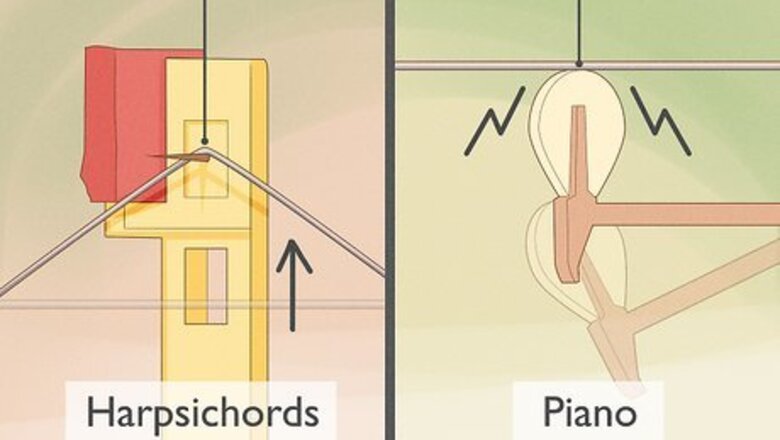
views
- Harpsichords and pianos look similar and both make notes with strings, but harpsichord strings are plucked while piano strings are struck by small hammers.
- Harpsichords usually have a 5-octave range (F1-F6), while pianos have a 7¼ octave range (A0-C8). This lets pianos play higher and lower notes.
- Harpsichords can only be played at one volume. The plucking mechanism works the same, regardless of whether the keys are pressed hard or soft.
- Pianos can be played loudly or softly depending on how hard the keys are pressed. This, plus their range, makes them more versatile than harpsichords.
Harpsichords and pianos produce sound very differently.
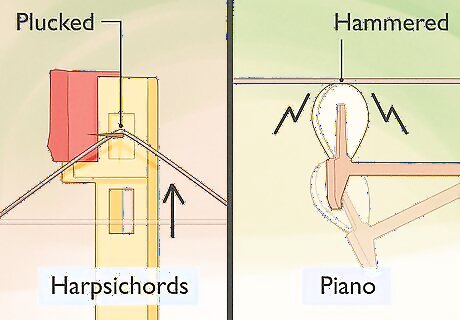
Harpsichord strings are plucked, while piano strings are struck. When you press a harpsichord key, a small piece of material called a “plectrum” plucks a string, producing a sound that’s always the same volume. When you press a piano key, however, a small hammer strikes a string according to how hard you pressed the key. This gives you control over the piano’s loudness. Since their strings are plucked, harpsichords are classified as stringed instruments. Since their strings are struck, pianos are classified as percussion instruments.
Pianos let you control volume, but harpsichords don’t.
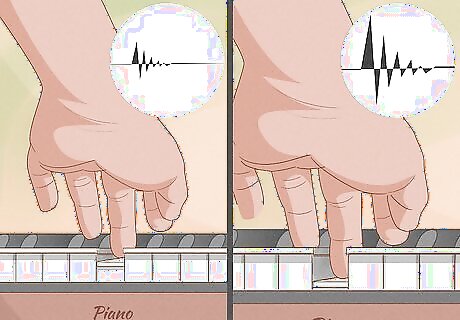
A piano’s loudness depends on how hard you press the keys. When you press a piano key, a hidden mechanism causes a hammer to strike a string with the same intensity that the key was pressed. When a harpsichord key is pressed, however, a piece of material called a “plectrum” plucks a string, producing a note that’s same volume regardless of how hard or softly the key was pressed. Most pianos have hammers wrapped in wool or felt. The wrapping produces a tone that’s powerful but not harsh.
Pianos have 88 keys, while harpsichords have 61 keys.
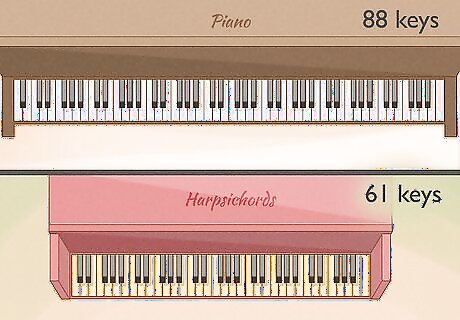
Having more keys gives pianos a greater range than harpsichords. Pianos have a range of 7¼ octaves (from A0 - C8), while a harpsichord’s range is at most 5 octaves (from F1 - F6). This means that pianos can play higher and lower notes than harpsichords can. Some harpsichords have as few as 56 keys, giving them an even smaller range. White piano keys are usually made of ivory or light wood, while the black keys are usually made of a darker wood like ebony. Harpsichord keys are always made of wood.
Harpsichords were more popular than pianos until the 1800s
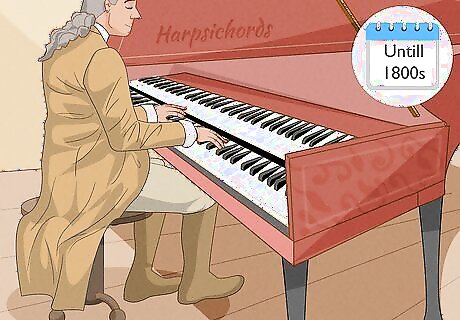
Before pianos, harpsichords were prominent in western classical music. They were heard in operas, symphonies, and concertos by some of Europe’s most famous composers—including Mozart, Bach, and Pachelbel, to name just a few. By the 1800s, however, pianos came to dominate thanks to their versatility and range. Since the 19th century, the piano has been featured in music from all over the world. Famous piano players include Mozart, Frédéric Chopin, Billy Joel, Chick Corea, Hiromi Uehara, and Alicia Keys, to name just a few.
Pianos and harpsichords both have an acoustic wooden body.
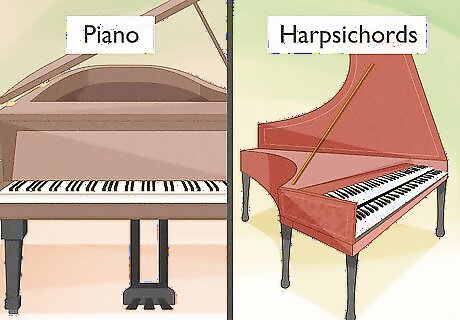
Both instruments also use keyboards and strings. The strings are connected to the curved body and are pulled taut to produce a specific musical note when a corresponding key is pressed. The body sits on top of a wooden soundboard, which vibrates and amplifies the sound. Though they have a similar shape, harpsichords are usually longer and narrower than pianos since they have fewer keys. Some harpsichords have two keyboards—that is, two sets of keys, one on top of the other. The second set of keys could be moved left or right to quickly change the key of the music being played.
Harpsichords and pianos are played very similarly.
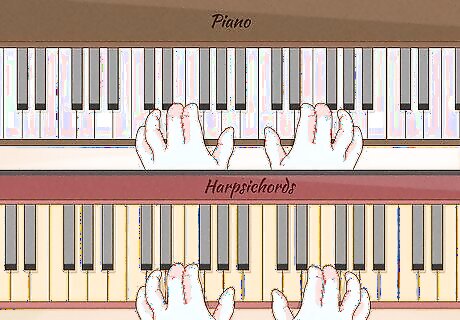
Both instruments require the same skillset and techniques. Chords, arpeggios, and harmonies are made with similar movements and hand positions. Music written for the harpsichord can be played on a piano due to the latter’s larger range, and some modern musicians actually believe some harpsichord pieces sound better on the piano. Some musicians find harpsichord’s slightly easier to play due to the lack of volume control, since they don’t have to worry about how hard they press the keys.


















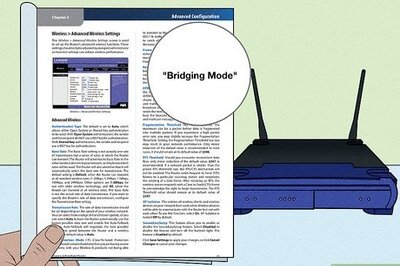

Comments
0 comment